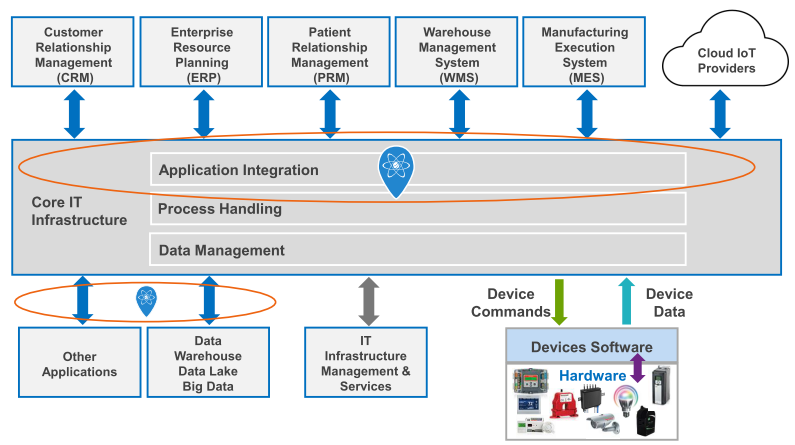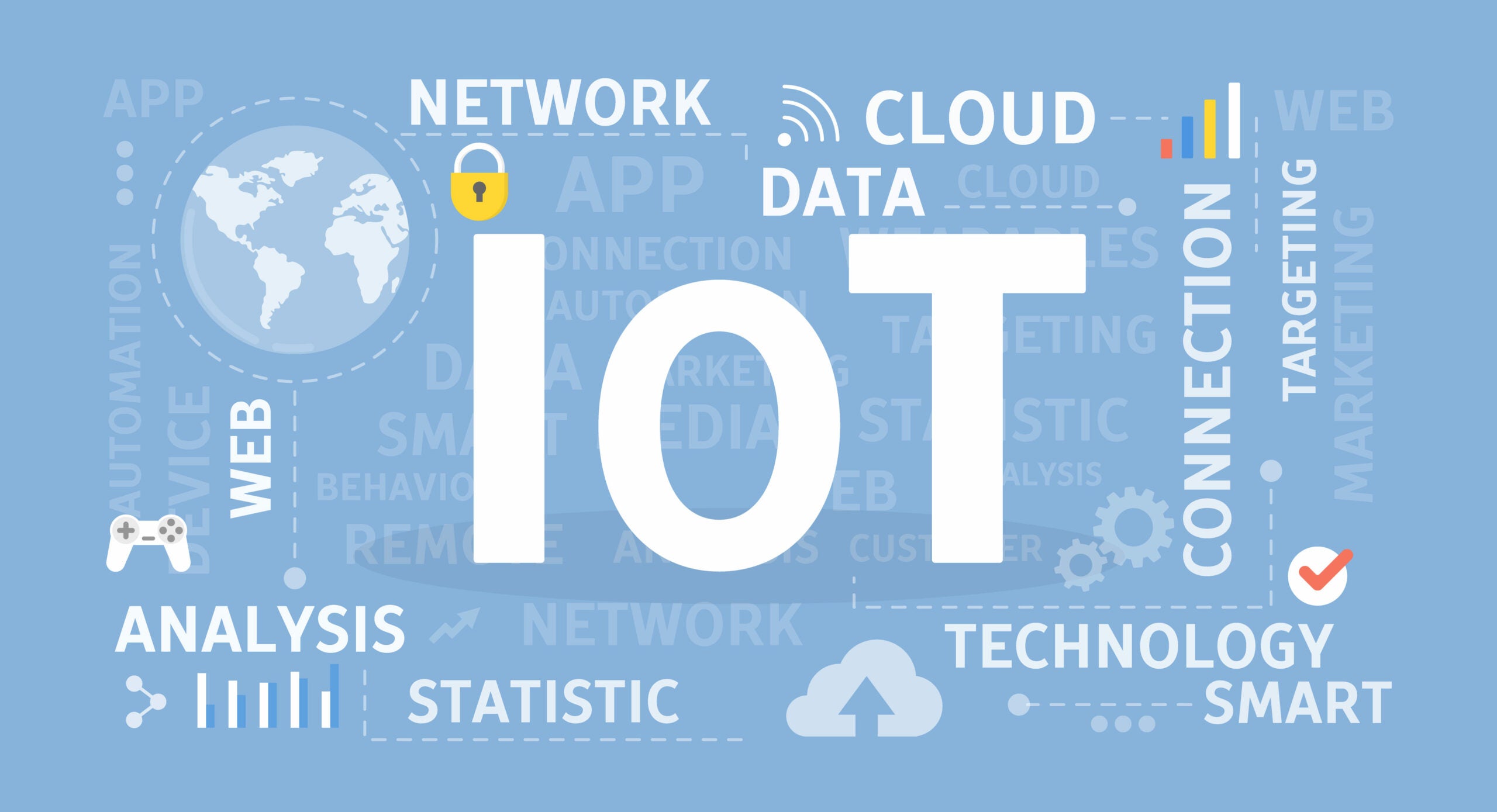When a colleague suggested I read Perficient’s new guide on the Internet of Things, I was interested to see what one of Boomi’s leading partners had to say on the topic. After all, guiding Boomi’s integration strategy for the IoT is part of my job.
Perficient really nailed it. Packed with practical guidance and 50 IoT use cases across 11 industries, Perficient’s “The Why, What, and How of IoT” delivers insightful thinking that can help organizations capitalize on the immense potential of the IoT.
The IoT Integration Imperative
Perficient’s guide hit home with me because at Boomi we’re seeing huge activity in the IoT space as organizations look to our cloud-native technology. It is the perfect fit for the IoT by making it fast and easy to integrate applications, clouds and people. As an enterprise application, our cloud-native technology puts device data to use for driving business improvements and insights.
Such rapid integration capabilities will be necessary to be competitive in what will be a constantly changing and fast-paced new world of device data generation for industries like manufacturing, healthcare, transportation, energy, retail, hospitality and more.
Integration helps capture data from smart devices and move it into business applications to automate processes, support real-time monitoring, and apply analytics for insights. As Perficient — which won Boomi’s New Partner of the Year Award for 2017 — noted in its guide:
“Adopting an IoT solution requires cross-functional coordination between business, operations and security colleagues to identify critical dynamics such as scalability, security and back-end integration with enterprise resource planning (ERP), CRM, or inventory systems, among other things.”
Another key takeaway from Perficient’s guide is that the IoT is still in its infancy, though it’s growing at hyper speed. Business Insider predicts that organizations will invest $4.8 trillion in the IoT by 2021, while Perficient notes the number of IoT devices will soar from 6.6 billion to 22.5 billion.
Still, in these early stages there’s no single plug-and-play IoT product on the market. Organizations need to connect an array of disparate hardware and software, which can involve everything from devices to a data lake hosted on Amazon Web Services and everything in between.
I used the diagram below to depict connectivity across a typical IoT architecture during a presentation at our Boomi World annual conference last September.

The IoT and Integration
Connectivity is what Boomi does. The Boomi integration platform as a service (iPaaS) is used by more than 6,200 organizations to build connected businesses. Our low-code environment makes it far faster and easier to integrate device data and business data from applications, clouds and people compared to custom-coding or traditional middleware.
IoT Integration in Real-Life
To understand the importance of integration for managing IoT data, let’s take a look at a real-life example of the IoT and the role of integration for a cold storage warehouse.
In this scenario a company would use the Boomi platform to run integration, API management and workflow automation for harnessing IoT data, which it would use to monitor refrigeration equipment for avoiding mechanical failures that could lead to product spoilage and lost revenues.
Integration
Boomi iPaaS provides the connectivity necessary to listen for temperature issues and initiate the integration of warehouse management systems, employee directories, text messaging systems, temperature data, and service ticketing systems. This scenario provides the automation of the integration of applications, device data, and people to alert personnel to take action to avoid the potential loss of perishable goods.
API management
Boomi API Management lets organizations rapidly create, publish and manage APIs that are required to securely provide the right data to the right people. In the integration scenario above, people are involved, which means there is likely use of mobile, tablet or desktop applications by warehouse personnel. These applications will depend on the right temperature data and business data being delivered to the right people to assess and resolve a potential refrigeration situation.
Workflow automation
Boomi Flow fully integrates the “people” aspect of an IoT workflow, helping provide even greater automation and efficiencies to any IoT-driven process. Although integration and API management are providing the detection, alerting the right people, and initiating a service ticket to inspect a situation, Boomi Flow makes it possible to bring these processes to full resolution. Can the refrigeration be repaired or the produce moved in time to avoid a loss of the perishable product? Or, was there loss and a resulting insurance claim to recover costs?
Workflow automation is necessary to take a potential situation and orchestrate the applications and people to achieve a business outcome as fast as possible.
Edge Integration
Often times it is much more advantageous to take action and initiate the integration of applications, clouds and people as close to devices and data as possible. Boomi provides the flexibility to execute integrations and host managed APIs wherever it makes sense. The Boomi Runtime run-time engine can reside on and be managed across an enterprise landscape of gateways.
Making the Most of the IoT
We are now very much in the middle of realizing the benefits of IoT. As that realization grows, we see a rising number of enterprise adopters in various levels of digital transformation. In conversations with numerous technology leaders, I’ve confirmed some of the most promising ways the IoT can help our customers as they drive digital modernization and transformation initiatives:
Avoid loss of productivity.
Monitoring and servicing an industrial motor could avoid $50,000 an hour in lost productivity if the motor fails.
Avoid loss of product.
Detecting a rapid or slow degradation in refrigeration of a cold storage warehouse could avoid out of compliance risks or product spoilage.
Improved customer experience.
Incorporating consumer medical device data into a customer service portal could improve customer engagement and support team productivity.
Increased competitiveness.
Using device data from heavy equipment combined with geolocation tools, companies can automatically track operational movements for analyzing efficiencies to drive down costs.
New revenue streams.
A business could gain a usage-based insurance discount on its fleet of drones by generating a detailed record of fly times and geolocation information.
As Perficient’s guide spells out, the use cases for the IoT are vast. Deploying sensor-equipped smart devices is just the start. Capturing the full potential of the IoT demands a flexible, scalable ecosystem with integration at the center to collect and distribute data for intelligent automation and analytics.
About the Author Michael Morton is Boomi’s chief technology officer.

 English
English 日本語
日本語